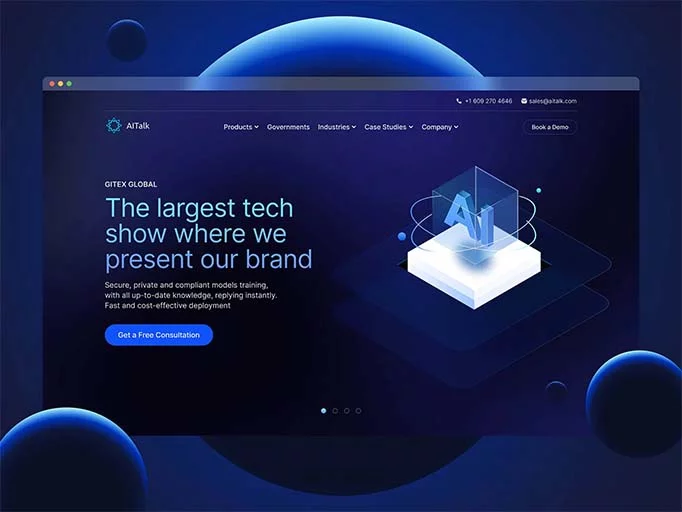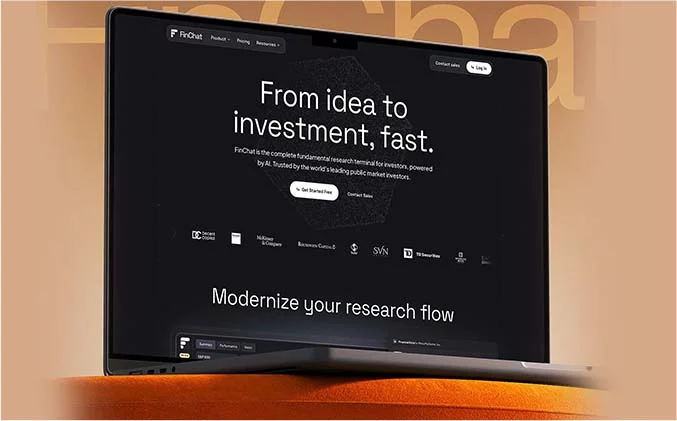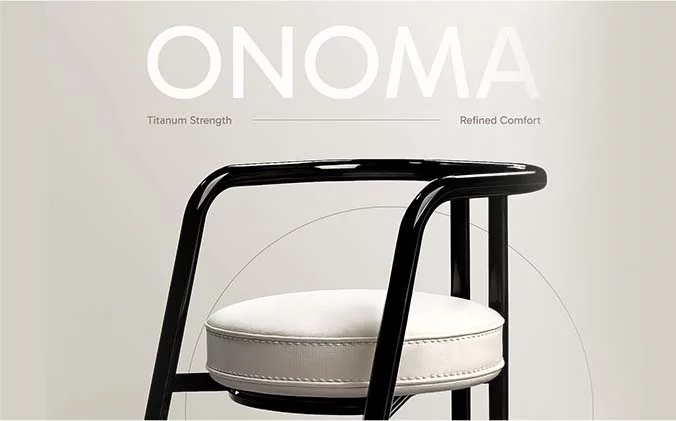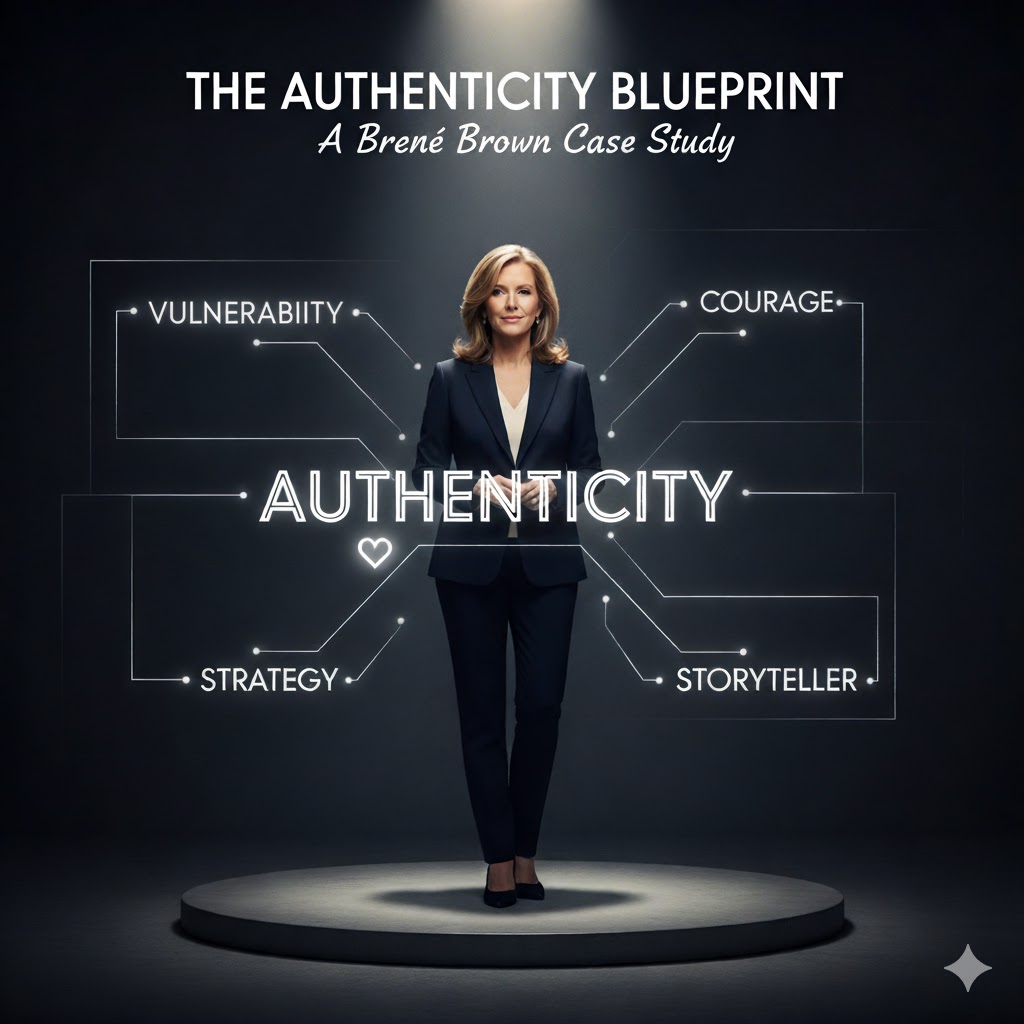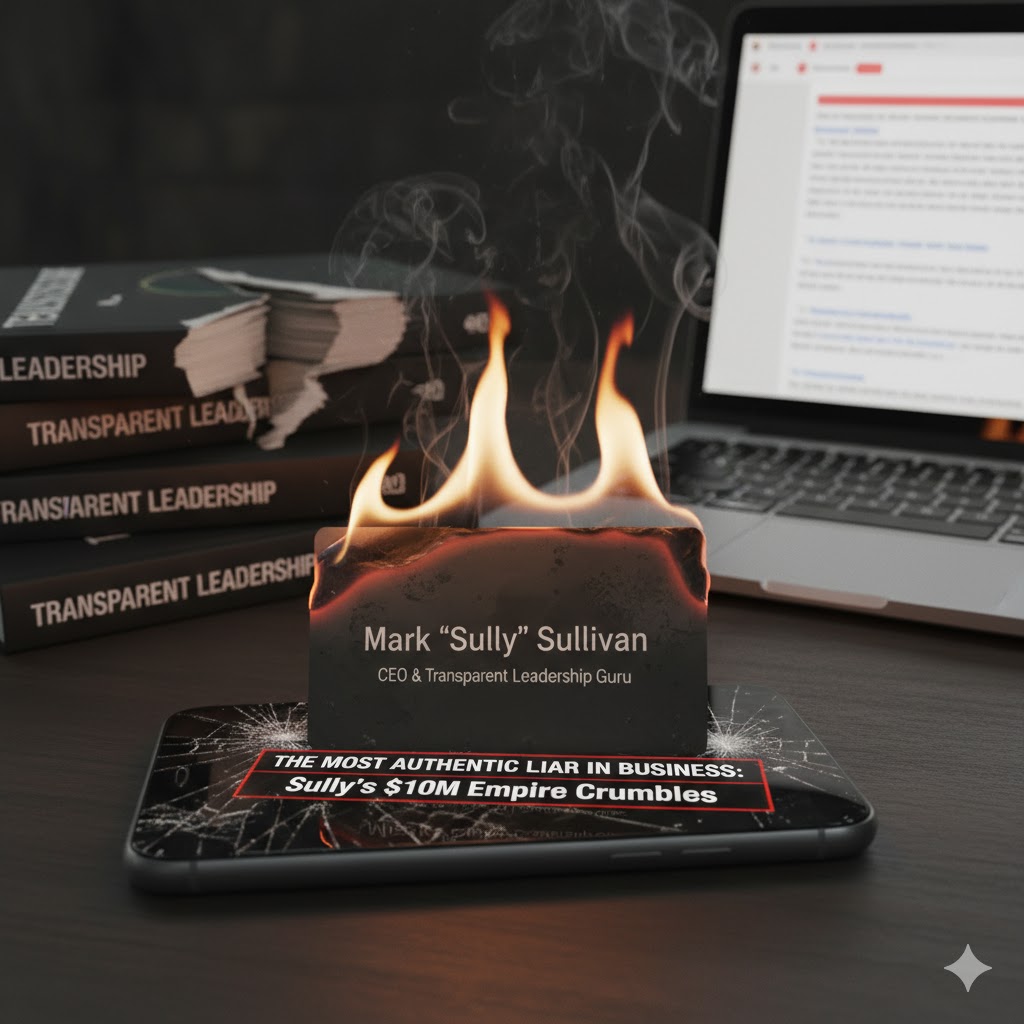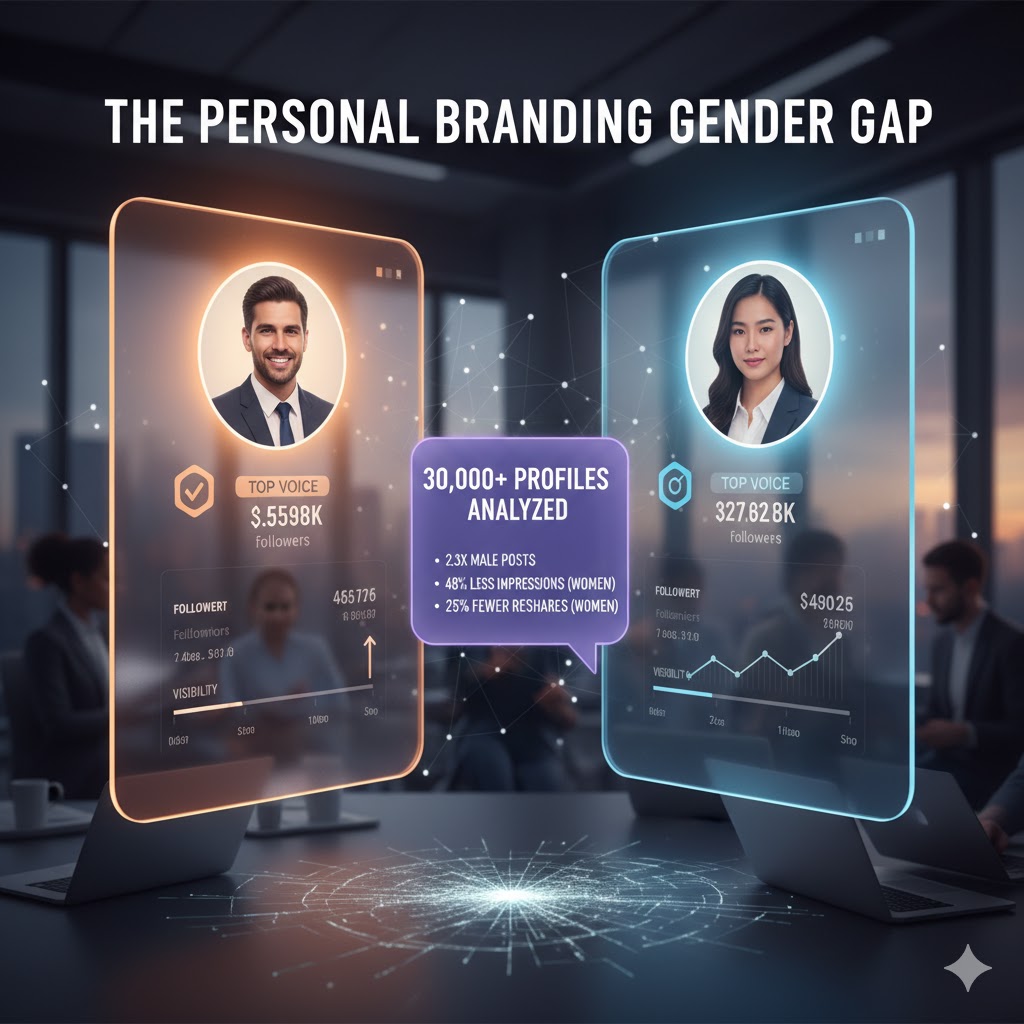
For years, I told my clients that personal branding was about strategy. Find your niche, be consistent, provide value. I thought it was a level playing field where the best ideas would win.
I was wrong.
Over the last year, something felt… off. I saw brilliant women in my network sharing groundbreaking work, only to be met with polite applause, while their male counterparts’ simpler takes went viral. It was a pattern I couldn’t ignore.
So, my team at Green Brander and I went looking for answers. We dove into over 30,000 LinkedIn profiles, analyzing everything from profile structure and tone to engagement patterns and audience perception.
What we found was a quiet, pervasive bias hiding in plain sight. Even today, it’s not about who is more qualified or who posts more. It’s about how the same exact behaviors, confidence, authority, even vulnerability, are judged differently based on who is expressing them.
This isn’t just a data story. It’s a story about whose voice is allowed to matter.
The Invisibility Tax: Why Women’s Voices Don’t Carry as Far
Let’s start with a gut punch of data. From our 30,000 profiles:
- Men were 2.3x more likely to post thought leadership content every single week.
- Women’s posts averaged 48% fewer impressions, even when their content was just as engaging.
- Posts by women received 25% fewer reshares, despite having a more positive, less polarizing tone.
At first glance, you might say, “Well, men post more, so the algorithm rewards them.” That’s part of it, but it’s not the whole story. The real issue is in how credibility is granted.
We saw this play out constantly:
When a male leader posted, “I made a tough call today that cost us money but saved our values,” he was showered with praise for his “principled leadership.”
When a female leader wrote almost the same thing, “I made a tough decision that wasn’t popular, but it was the right thing to do”, the comments called her “brave, but emotional.”
Same action, different judgment. He’s a leader. She’s taking a risk. Visibility isn’t just about showing up; it’s about being seen as legitimate when you do.
The Confidence Tightrope: The Penalty for Self-Promotion
“So why don’t women just own their success?”
It’s a question I hear a lot, and our data provides a frustrating answer: because they get punished for it.
Our sentiment analysis revealed that women were more likely to use qualifying language like “I’m so grateful for the opportunity…” or “I was lucky to be a part of…” when sharing a win.
Men, in stark contrast, used assertive, ownership-focused phrasing like “I led…” or “I launched…” nearly 3x more often.
This isn’t a lack of confidence; it’s a learned survival strategy. Research has long shown that assertiveness in women is often perceived as aggression, while in men, it signals leadership. It’s a double bind.
- If women understate their achievements, they are overlooked.
- If they assert them, they are judged as arrogant.
One woman we interviewed put it perfectly: “When I celebrate a win, I get DMs saying I’m ‘showing off.’ My male colleague posts the exact same kind of update, and people flood the comments to congratulate him.”
The Bias in the Machine
It’s not just human perception; the algorithms have learned our biases, too.
LinkedIn’s algorithm, for example, rewards “engagement velocity”, how fast a post gets likes and comments. Our study found that men’s posts typically receive faster initial engagement, triggering the algorithm to show it to more people. Women’s posts often grow slower, gaining traction over a longer period.
Because the system is built for speed, it creates a visibility spiral. The post that gets early traction wins, compounding its advantage, while the slow-burn post never reaches its full potential. The machine isn’t intentionally biased, but it’s designed to amplify existing social patterns, and that includes who we instinctively give our attention to first.
The Vulnerability Trap: His “Authentic Leadership” vs. Her “Personal Story”
This is the one that hit us hardest. We’re all told that authenticity is the key to building trust. But whose authenticity is rewarded?
We analyzed 5,000 “vulnerable” or personal posts. The results were staggering.
- Women’s vulnerable posts received higher empathy engagement (supportive comments).
- But they received lower professional endorsement (fewer shares, saves, or DMs about collaboration).
- Men’s emotional posts, while fewer, were more often framed as leadership reflections, earning them more long-term follower growth and professional opportunities.
It’s the same emotion, but it’s given two different labels.
When a man shares a struggle, it’s seen as “authentic leadership.” When a woman shares a struggle, it’s seen as a “personal story.”
His vulnerability builds his authority. Hers builds connection, but often keeps her in the “relatable” box, not the “boardroom” box.
This Isn’t a “Woman’s Problem” to Fix
So, what do we do? The answer isn’t for women to “brand better.” It’s for all of us to see the system for what it is.
For women and allies, it’s about being intentional:
- Reframe Your Language: You can be grateful and authoritative. Instead of, “I’m grateful to have been part of this,” try, “I was proud to lead this project’s vision alongside an incredible team.” It’s not about bragging; it’s about claiming your role.
- Collaborate Strategically: Partner with male allies and mentors who can amplify your voice and lend you their platform’s “credibility score” while you build your own.
- Control Your Narrative: Blend empathy with authority. Tell stories that showcase not just your collaborative spirit but your decisive leadership.
But the real change has to come from the top.
Companies must move beyond performance reviews and offer personal branding mentorship. They need to create visibility programs that intentionally feature women leaders and celebrate their thought leadership, not just their quarterly results.
And platforms like LinkedIn must regularly audit their algorithms for bias, promote transparency, and use their editorial power to highlight voices that aren’t just the loudest, but the most insightful.
The personal branding gender gap isn’t about who can build a better brand. It’s about who gets seen and heard when they do. Visibility is power. In a world where our digital presence is our new resume, we can’t let bias be the gatekeeper.


